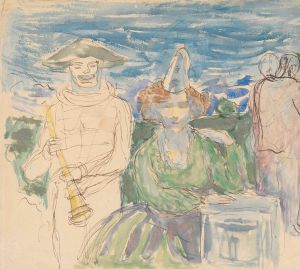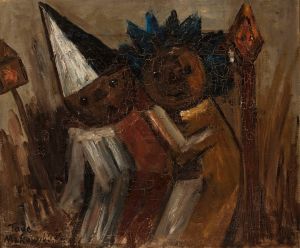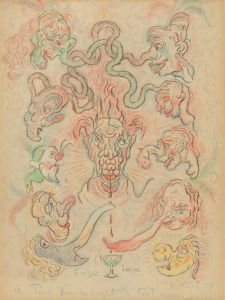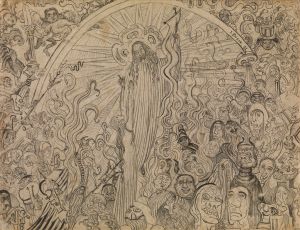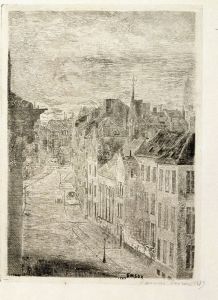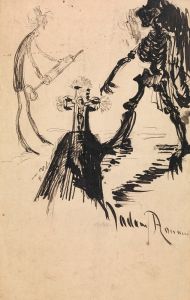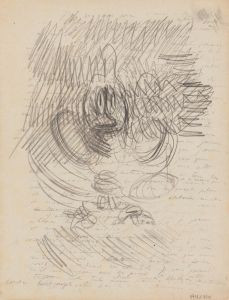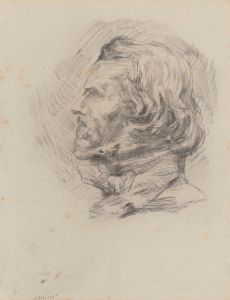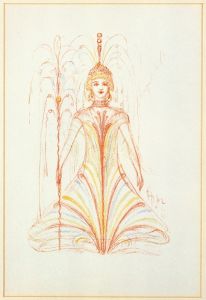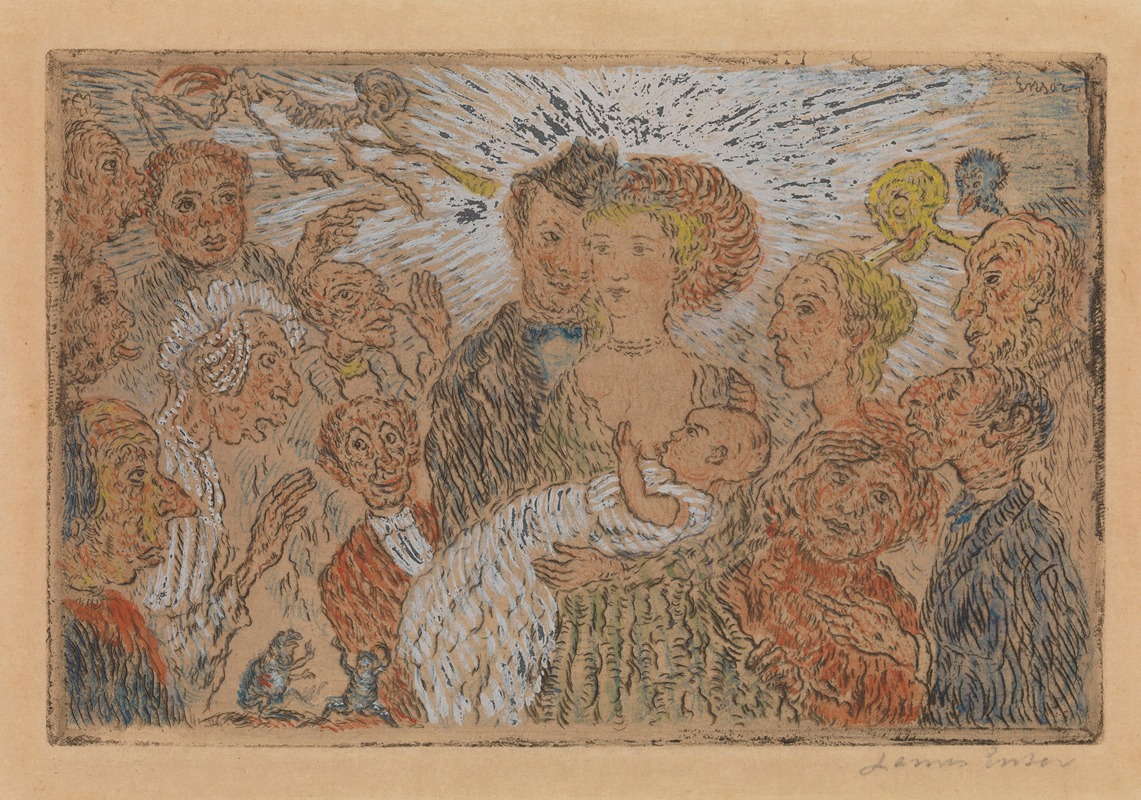
Envy
A hand-painted replica of James Ensor’s masterpiece Envy, meticulously crafted by professional artists to capture the true essence of the original. Each piece is created with museum-quality canvas and rare mineral pigments, carefully painted by experienced artists with delicate brushstrokes and rich, layered colors to perfectly recreate the texture of the original artwork. Unlike machine-printed reproductions, this hand-painted version brings the painting to life, infused with the artist’s emotions and skill in every stroke. Whether for personal collection or home decoration, it instantly elevates the artistic atmosphere of any space.
"Envy" is a painting by the Belgian artist James Ensor, created in 1895. Ensor, known for his unique and often provocative style, was a prominent figure in the Symbolist movement and played a significant role in the transition from 19th-century realism to 20th-century expressionism. His work often features grotesque imagery, satirical themes, and a vivid use of color, all of which are evident in "Envy."
The painting "Envy" is part of Ensor's exploration of human emotions and societal critiques. Ensor frequently depicted the seven deadly sins in his work, using them as a lens to examine the darker aspects of human nature. "Envy," as a subject, allowed Ensor to delve into themes of jealousy, resentment, and the destructive nature of coveting what others possess.
In "Envy," Ensor employs his characteristic style, blending elements of caricature with a vibrant color palette. The painting features distorted figures and exaggerated expressions, which are typical of Ensor's approach to capturing the essence of human vices. The figures in the painting are often masked or skeletal, a recurring motif in Ensor's work that symbolizes the hidden and often sinister aspects of human behavior.
Ensor's use of masks and skeletons can be traced back to his fascination with the carnival culture of his hometown, Ostend, Belgium. The carnival, with its costumes and masks, provided Ensor with a rich source of inspiration, allowing him to explore themes of identity, disguise, and the duality of human nature. In "Envy," these elements serve to underscore the idea that envy is a masked emotion, one that people often hide but which can have corrosive effects on both individuals and society.
The painting's composition is dynamic and chaotic, reflecting the tumultuous nature of envy itself. Ensor's brushwork is expressive, with bold strokes and a vivid color scheme that captures the intensity of the emotion. The use of color in "Envy" is particularly noteworthy; Ensor employs contrasting hues to create a sense of tension and unease, drawing the viewer into the emotional turmoil depicted on the canvas.
James Ensor's work, including "Envy," was not widely appreciated during his lifetime. However, he has since been recognized as a pioneer of modern art, influencing later movements such as expressionism and surrealism. His ability to convey complex emotions and social commentary through his distinctive style has earned him a lasting place in art history.
"Envy" exemplifies Ensor's skill in using art to critique societal norms and human behavior. Through his imaginative and often unsettling imagery, Ensor invites viewers to reflect on the nature of envy and its impact on the human condition. The painting remains a powerful testament to Ensor's artistic vision and his ability to capture the complexities of human emotions.





